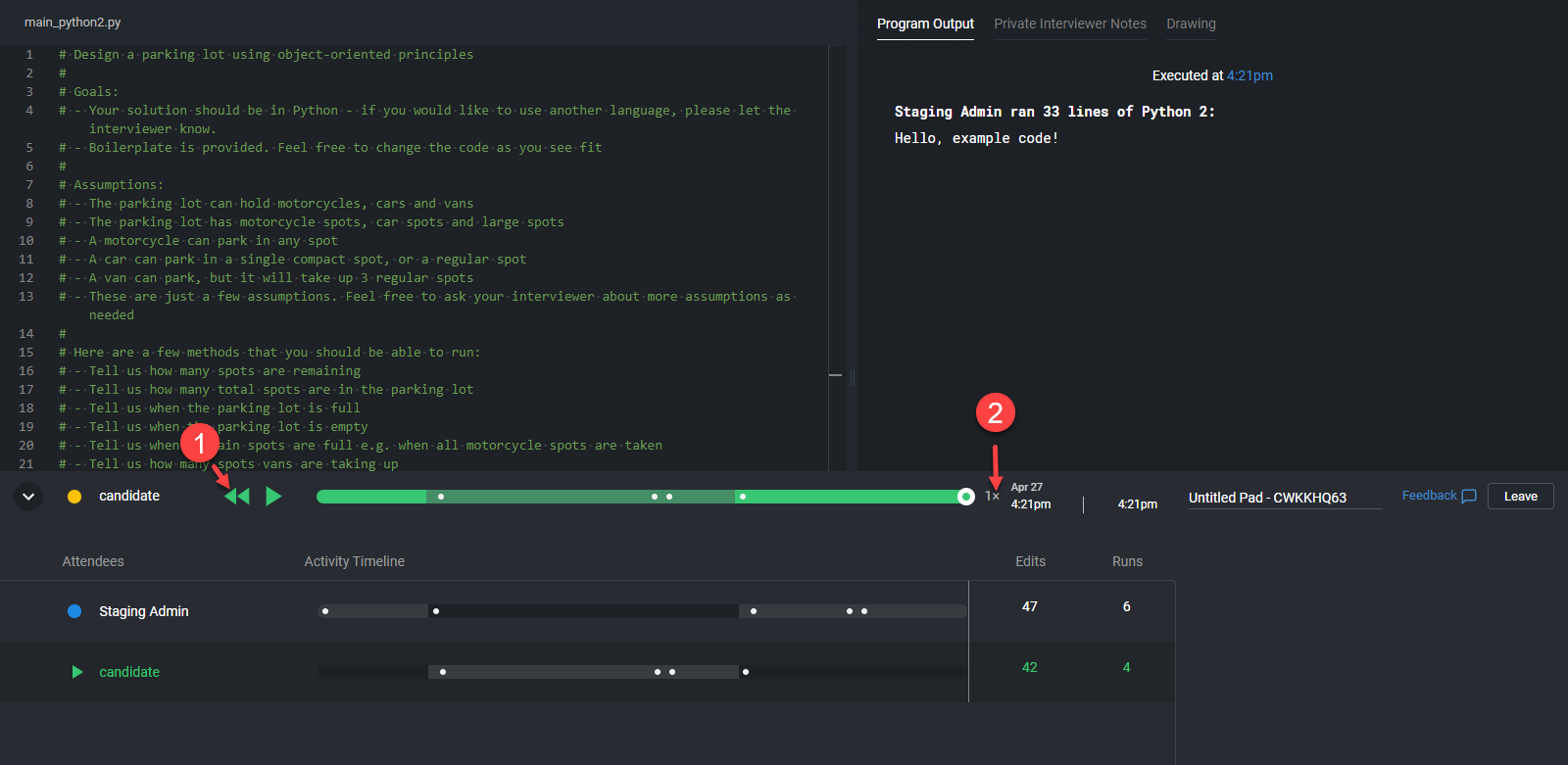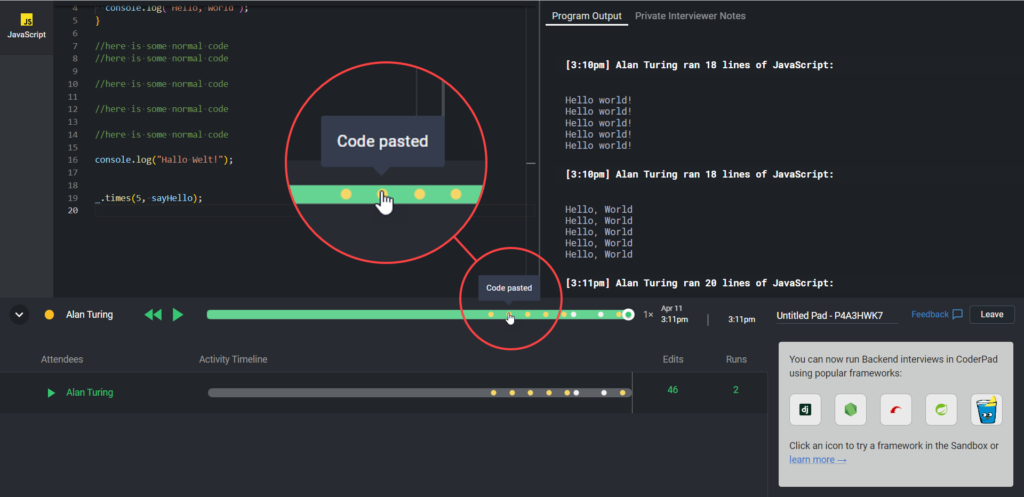Playback & Pad Summary
Last updated on • Disponible en Français
During an interview, the Interview platform keeps track of every keystroke of every participant within a pad.
Once the interview has been ended, interviewers can replay the entire interview and access the pad summary. This is useful to review a candidate’s solution, write up feedback and also to share the interview session with other teammates.
Playback mode
⚠️Only code changes on the left window will be shown in the playback. Any code run in the shell (like REPL commands or package installations) will not be displayed in playback mode.
How to access Playback Mode
There are two ways to view playback in the pad.
1. The pad will automatically transition to Playback Mode once the interviewer clicks End Interview.

2. It’s also available in the Pads List after the interview has been ended:
Using Playback Mode
Playback mode displays a separate track for each participant in the pad to clearly highlight individual code edits and runs.
You can review the playback for each participant by using the “expand arrow” (1) and then selecting the participant (3) for which you’d like to view the playback. The top progress bar (2) represents the progress for the selected participant:

When playback first loads, the top progress bar (2) will display by default the participant with the most code edits.
The track will follow active edits for that participant. Other participants’ edits may show up in the background, but if the active participant is not making any edits, we automatically fast forward through all other edits. To change focus to a different participant’s edits, click on their track to switch.
You can use your mouse to click or drag the slider on any of the progress bars to skip forward or backward in the playback. Alternatively you can use your arrow keys to move forward or backward as well.
Next to the slider for each individual in the pad you’ll see:
- Edits – Equivalent to a couple keystrokes, depending on typing speed.
- Runs – The number of times the participant ran their code to produce output.
Other controls to be aware of:
- Back Button – skips back 5 edits
- Speed Control – can adjust playback speed from 1x-8x

✅ With the new tabbed UI, The playback will automatically switch between tabs and/or files in the order that they happened in the interview.
Suspicious behavior notifications
Copy/paste notifications
Pasting events from sources outside the pad are highlighted to assist you in detecting potential cheating.
In the playback bar you’ll see a yellow dot every time a user has copied content from a source outside the pad — when you hover over it you’ll see a Code pasted message pop up:
You can click on that yellow dot to jump to the paste event to evaluate it to see if it meets your criteria for cheating.
✅ The notification trigger on external pastes from outside of the CoderPad Interview code editor. That means that a candidate could copy from the AI Assist tab of Interview and still trigger the copy/paste notification.
Candidate left IDE notifications
On the playback bar you’ll also see orange dots on where the candidate’s browser is no longer focused on the IDE.

As with the copy/paste notifications, you can click on the orange dot to jump to the “clicked away” event to evaluate it to see if it meets your criteria for cheating.
⚠️ Pasted code and leaving the IDE does not always equal cheating. While the candidate could be copying code from sources like StackOverflow or ChatGPT, they could also simply be pasting code that they’ve been writing in their own IDE or editor like Notepad++. Also note that using the browser console will count as a ‘left event’ because the console is a technically different browser tab, even though it’s not rendered that way.
Pad summary
If you click on the Interview Summary tab on the right side of the playback pad, you can see a summarized version of interview details, attendance, code and questions, and suspicious behavior.

Share pad contents
Want to share results with team members not on CoderPad? You can download the candidate’s code either as a .zip. or .json file by clicking on the kebab icon next to the pad and selecting Download ZIP or Download JSON.

✅ The candidate’s code is only available to download once the pad has been ended.

